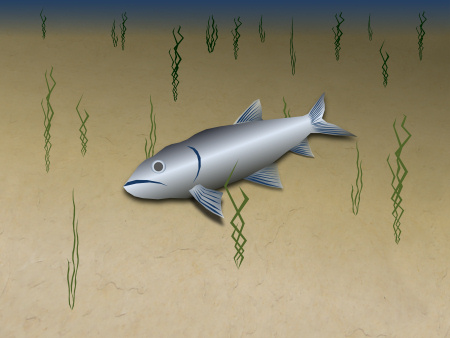 |
| Previous Image | Next Image |
| Description: Having spawned the fish dies and shortly after sinks to the seafloor. Although fossils can be found in sediments deposited in turbulent (high energy) environments near the coastline, complete/articulated skeletons require undisturbed conditions. A quiet seafloor with minimal light, low oxygen levels and a soft muddy composition are among the conditions suitable for preserving organic remains. Decay and burial After several weeks the fish is partially decomposed. Despite the calm conditions on the seafloor, several thousand meters into the bedrock pressure is building along an active geological fault. Suddenly the stressed rock slips, sending shockwaves to the rock above and causing the sediment nearby to mobilise. The mobile sediment travels across the seafloor burying the fish in the process, in what is often termed a rapid burial event. Once entombed beneath the sediment the remaining flesh and soft tissue are broken down by bacteria, leaving just the skeleton in the position of burial. Picture Stats: Views: 604 Filesize: 53.45kB Height: 338 Width: 450 Source: https://biology-forums.com/index.php?action=gallery;sa=view;id=11177 Keywords: fossil fossils |
